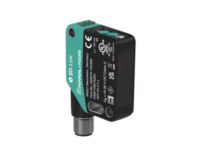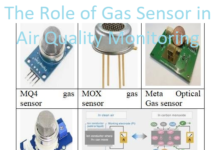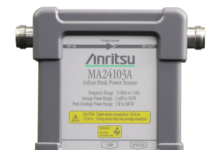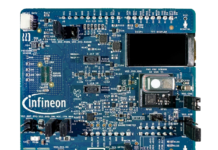
Sensor technology is providing new insights for fleet maintenance, giving managers a fresh view into the mechanical health and utilization of expensive assets.
The rising costs for fleet maintenance and repairs, including the upkeep of components like the charge air cooler, continue to pose a significant challenge, representing a larger slice of the operational expense pie each year. Since 2008, costs for maintenance and repair have escalated from $0.103 per mile to $0.156 per mile in 2015, or from 6 percent of total average marginal cost to 10 percent of average costs, according to the American Transportation Research Institute’s 2016 Analysis of the Operational Costs of Trucking.
Amidst these escalating expenses, ensuring the proper maintenance of critical components such as the charge air cooler becomes paramount. Implementing a rigorous cleaning regimen for the charge air cooler can contribute to mitigating these rising costs. By incorporating charge air cooler cleaner products or specialized cleaning services into routine maintenance schedules, fleet operators can optimize the performance and longevity of this crucial component. Moreover, cleaner charge air coolers not only enhance fuel efficiency but also reduce wear and tear on associated parts, thereby further alleviating maintenance costs in the long run.
In addressing the persistent challenge of rising maintenance expenses, integrating charge air cooler cleaner into maintenance strategies emerges as a proactive measure. Through such measures, fleet operators can effectively manage operational costs and bolster overall efficiency amidst the escalating challenges of maintenance and repair expenditures.
That’s where smart truck technology can help. Trucks and trailers equipped with sensors and connected to fleet telematics systems provide insights into the mechanical health of fleets. Essentially, sensors are mechanical and electronic equivalents of the human senses. They can measure changes in sound, light, temperature, pressure and motion and can be paired with output devices to communicate that data to other systems.
Sensors have the ability to provide alerts on a variety of mechanical issues, including tire pressure, brakes, electrical systems, lights, engine performance and many other parameters. They can also be used to track events such as temperature changes in refrigerated trailers or doors opening to monitor against possible theft.
Of course, truck fleets have deployed sensors in the past. But the data could be downloaded only when the truck went in the shop. Today, onboard cellular and Wi-Fi systems transmit data in real time or on a regular basis while the truck and trailer are still on the road. Depending on the system, the data is transmitted via telecommunications platforms to the cloud where it can be remotely accessed through dashboards and online management systems.
Here’s a look at three ways sensor technology will influence fleet maintenance practices now and in the future:
1. Predictive Maintenance
With constant monitoring of vehicle performance, fleet maintenance becomes much more data-driven and predictable. Companies can develop more efficient maintenance plans, cut truck downtime and plan fleet replacements with greater accuracy. Overall, technology can reduce fleet maintenance costs by up to 5 percent, according to the report, “The Era of Digitized Trucking: Transforming the Logistics Value Chain” from PwC, and could prolong the overall service life and reduce equipment expenditures.
For example, in 2010, UPS outfitted many of its delivery trucks with more than 200 sensors that stream data to servers for analysis. The data captured allows the company to service vehicles based on actual use and performance rather than following a one-size-fits-all schedule. That way, UPS can pull trucks out of service at just the right time, reducing downtime and maintenance costs. The telematics also help maintenance techs easily identify specific parts to replace. For example, UPS found that mechanics replaced an entire fuel injector when only an O-ring was faulty, Automotive Fleet reported.
With onboard sensor technology, maintenance systems can send drivers and managers a reminder for preventive maintenance or alert them to looming problems before a standard dashboard warning light would be triggered.
2. Fleet Management
As the cost of sensor technology continues to fall, increased access to vehicle and driver data will allow fleet managers to make better decisions. Along with a TMS, operations can be streamlined in terms of route optimization, proof of delivery, and auto driver allocation. Fleet management is moving from a collection of independent systems to a holistic view of the enterprise. Managers now have greater visibility into fuel costs, idle time, accidents, compliance violations, and other contributors to fleet management costs.
Saia LTL Freight Inc. installed sensors and cellular service on its 3,000-truck fleet for real-time data analysis. In the first year, the company increased fuel efficiency by 6 percent, which resulted in $15 million in savings, more than the cost of the initiative, The Wall Street Journal reported.
3. Big Data & Analytics
IoT-connected trucks can talk back to drivers and managers to deliver more optimized fleet management utilization. Data analytics can help identify trend outliers and inefficient operation that might otherwise go unnoticed. But collecting and analyzing every byte of data can be overwhelming. Instead, enterprises are running analytics at the device and gateway level so that drivers can be alerted of any situation that requires attention, and data can be pushed to headquarters for further analysis.
With these practices, fleet operators can take advantage of the developing technology to optimize maintenance operations, delivering benefits that can transform the bottom line.
Source: https://insights.samsung.com



















